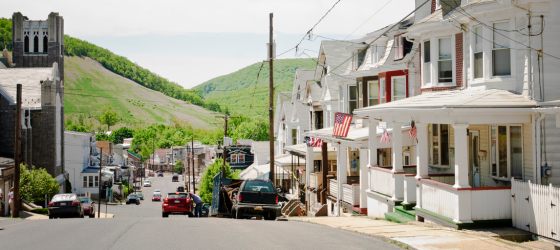grants Up to $25 Million AVAILABLE for projects that improve road safety!
The purpose of the Safe Streets and Roads for All (SS4A) grant program is to improve roadway safety by significantly reducing or eliminating roadway fatalities and serious injuries. The program focuses on the development of a comprehensive safety action plan and its implementation for all users of our highways, streets, and roadways, including pedestrians, bicyclists, public transportation users, motorists, personal conveyance and micromobility users, and commercial vehicle operators. The program provides funding to develop tools to strengthen a community’s approach to roadway safety and save lives and prevent serious harm.
Funding Overview
The Bipartisan Infrastructure Law established the SS4A program and approved $6 billion in funding, with $5 billion in advanced appropriations. For fiscal year 2023, $1 billion has been made available for grants under the SS4A program, plus approximately an additional $177 million for funding for Planning and Demonstration grants, or supplemental planning and demonstration activities in Implementation Grant requests, that was unallocated from FY 2022.
For Planning and Demonstration Grants, award amounts will be based on estimated costs, with an expected minimum of $100,000 and an expected maximum of $10,000,000. The Department expects larger award amounts for metropolitan planning organizations (MPOs), applicants that are multijurisdictional in scope, or those conducting activities in a large geographic area.
For Implementation Grants, DOT expects the minimum award to be $2,500,000 and the maximum award to be $25,000,000.
Eligible Applicants
Eligible applicants for all grants are:
- A metropolitan planning organization (MPO);
- A political subdivision of a State (e.g., cities, towns, counties, special districts, and similar units of local government);
- A federally recognized Tribal government; or
- A multijurisdictional group of entities
For an Implementation Grant, eligible applicants listed above must also meet at least one of the following conditions:
- Have ownership and/or maintenance responsibilities over a roadway network;
- Be an eligible applicant with safety responsibilities that affect roadways; or
- Have agreement from the agency that has ownership and/or maintenance responsibilities for the roadway within the applicant’s jurisdiction.
Eligible Activities
Planning and Demonstration GranT
- Creating or updating an existing Action Plan: Costs include only those that directly assist in the development of an Action Plan that covers the entire jurisdiction.
- Conducting supplemental planning: These costs must support the development of a new Action Plan or enhance an existing Action Plan.
- Carry out demonstration activities: Costs from these types of activities must be used inform an Action Plan by testing a proposed project and strategy to determine their potential benefits and future scope. These activities must be temporary in nature. Costs associated with completing the required data collection and evaluation of these activities are eligible.
Implementation Grant
- Applying low-cost roadway safety treatments system-wide, such as left- and right-turn lanes at intersections, centerline and shoulder rumble strips, wider edge lines, high-friction surface treatments, road diets, and better signage along high-crash urban and rural corridors.
- Identifying and correcting common risks across a network, such as improving pedestrian crosswalks by adding high-visibility pavement markings, lighting, and signage at transit stops, in a designated neighborhood, or along a busy public transportation route.
- Transforming a roadway corridor on a High-Injury Network into a Complete Street with safety improvements to control speed, separate users, and improve visibility, along with other measures that improve safety for all users.
- Installing pedestrian safety enhancements and closing network gaps with sidewalks, rectangular rapid-flashing beacons, signal improvements, and audible pedestrian signals for people walking, rolling, or using mobility assisted devices.
- Supporting the development of bikeway networks with bicycle lanes for different roadway volumes and speeds that are safe for people of all ages and abilities.
- Carrying out speed management strategies such as implementing traffic calming road design changes, addressing speed along key corridors through infrastructure, conducting education and outreach, setting appropriate speed limits, and making strategic use of speed safety cameras.
- Creating safe routes to school and public transit services through multiple activities that lead to people safely walking, biking, and rolling in underserved communities.
- Promoting the adoption of innovative technologies or strategies to promote safety and protect vulnerable road users in high-traffic areas where commercial motor vehicles (CMVs), pedestrians, bicyclists, motorcyclists, etc. interact.
- Conducting education campaigns to accompany new or innovative infrastructure, such as roundabouts, pedestrian hybrid beacons, or pedestrian-only zones.
- Reducing roadway departure crashes through enhanced delineation, shoulder widening, rumble strips, and roadside safety improvements.
- Evaluating and improving the safety of intersections by considering innovative design changes, improved delineation, and advanced warning.
